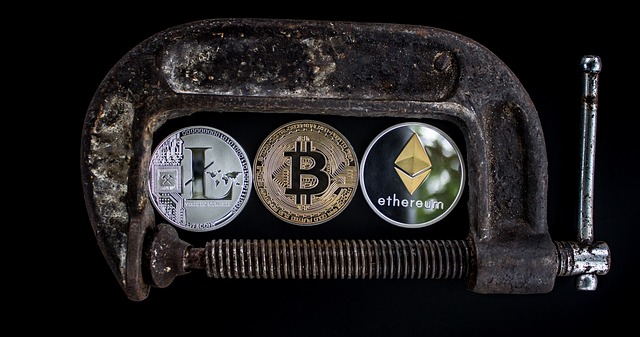Table of Contents
Blockchain Technology Overview
Blockchain technology is a distributed ledger system that securely records and verifies transactions across a network of computers. Each block in the chain contains data encrypted using cryptographic principles, making it immutable and transparent. This technology eliminates the need for intermediaries by allowing direct peer-to-peer transactions, thereby increasing efficiency and reducing costs.
One of the key features of blockchain is its decentralized nature, meaning that there is no central authority controlling the network. Instead, consensus mechanisms such as Proof of Work or Proof of Stake are used to validate transactions and add new blocks to the chain. This decentralization ensures security and trust in the system, as every participant has equal access to the information stored on the blockchain.
Key Features of Blockchain
Blockchain technology boasts several key features that set it apart from traditional systems. Immutability, a foundational trait of blockchain, ensures that once data is recorded on the chain, it cannot be altered or deleted. This feature is achieved through cryptographic hash functions, which create a unique fingerprint for each block, making tampering virtually impossible. Additionally, transparency in blockchain allows all participants to view the entire transaction history, promoting accountability and trust within the network.
Another essential feature of blockchain is decentralization, which eliminates the need for a central authority to verify transactions. Instead, consensus mechanisms such as Proof of Work or Proof of Stake enable network participants to collectively validate and add new blocks to the chain. This decentralized nature not only enhances security by removing single points of failure but also enhances censorship resistance, ensuring that the network remains open and accessible to all.
Decentralization in Blockchain
The fundamental premise of blockchain technology lies in its decentralized nature. Unlike traditional centralized systems where a single entity holds control over data and transactions, blockchain distributes this responsibility across a network of nodes. This decentralization ensures that no single point of failure exists, enhancing transparency, security, and trust within the ecosystem. Each participating node has a copy of the ledger, and consensus mechanisms validate and record transactions, creating a tamper-resistant system.
Decentralization in blockchain also fosters inclusivity and democratization. Anyone can join the network, validate transactions, and contribute to the overall operation of the system. This open participation empowers individuals and promotes a level playing field, without the need for intermediaries or trusted third parties. In addition, decentralization ensures that no single entity can unilaterally alter the ledger or manipulate the system for personal gain, reinforcing the integrity and immutability of the blockchain.
Consensus Mechanisms in Blockchain
Consensus mechanisms in blockchain play a vital role in ensuring agreement among nodes in a decentralized network. One of the most commonly used consensus mechanisms is Proof of Work (PoW), which requires network participants, known as miners, to solve complex cryptographic puzzles to validate transactions and create new blocks. While PoW is renowned for its security, it has faced criticism for its energy-intensive nature and scalability challenges. On the other hand, Proof of Stake (PoS) allows validators to create new blocks based on the number of coins they hold, promoting efficiency and reducing energy consumption. However, critics argue that PoS may lead to centralization, as wealthier participants have more influence.
Another noteworthy consensus mechanism is Delegated Proof of Stake (DPoS), where token holders vote for delegates to validate transactions on their behalf. DPoS is lauded for its scalability and transaction speed, making it a popular choice for various blockchain projects. Conversely, some express concerns about potential vote manipulation and centralization risks associated with DPoS. Furthermore, Byzantine Fault Tolerance (BFT) algorithms focus on achieving consensus in the presence of malicious nodes by ensuring agreement even if some network participants are acting dishonestly. Despite their effectiveness in fault tolerance, BFT algorithms are not immune to certain attacks and may have limitations in terms of scalability and decentralization.
Smart Contracts and Blockchain Security
Smart contracts, a fundamental component of blockchain technology, operate based on predetermined conditions. These self-executing contracts automatically execute and enforce agreed-upon terms once specific criteria are met. The use of smart contracts enhances security by reducing the need for intermediaries, minimizing the risk of manipulation, and ensuring transparency in transactions. However, vulnerabilities in smart contract code can expose systems to potential attacks, making code auditing and rigorous testing essential to maintain security.
Blockchain security relies on the immutability and decentralization of the ledger to safeguard data and transactions. The transparent and tamper-resistant nature of blockchain technology ensures that once information is recorded on the blockchain, altering it becomes extremely challenging. Additionally, cryptographic techniques such as digital signatures and hash functions play a crucial role in securing data integrity and authentication within the blockchain network. By incorporating robust security measures and ensuring compliance with best practices, organizations can mitigate risks and enhance the overall security of their blockchain applications.
Privacy and Anonymity in Blockchain
Blockchain technology provides a unique approach to privacy and anonymity. By design, blockchain offers a transparent yet secure framework for recording transactions. Each block in the chain contains a cryptographic hash of the previous block, providing a tamper-proof way of ensuring data integrity. This transparency allows all participants in the network to view the transactions, promoting accountability and trust.
Moreover, blockchain offers pseudonymity, where users are represented by cryptographic addresses rather than their real identities. This feature adds a layer of privacy by concealing the identities of transacting parties. While the transactions are visible on the blockchain, the real-world identities behind the transactions remain obscured, fostering a sense of anonymity. This inherent privacy aspect has implications for various applications, from financial transactions to supply chain management, where maintaining confidentiality while ensuring accountability is crucial.
Blockchain Scalability Solutions
Blockchain scalability has been a pressing concern within the blockchain community, given the increasing demands on the network as adoption grows. One key approach to addressing scalability issues is through the implementation of off-chain solutions. By moving some transaction processing off the main blockchain, off-chain solutions like the Lightning Network enable faster and more efficient transactions, reducing the burden on the main network and improving overall scalability.
Another popular scalability solution is the implementation of sharding, a technique that involves dividing the blockchain network into smaller, more manageable shards. Each shard is responsible for processing a subset of transactions, allowing for parallel processing and significantly increasing the network’s throughput. This approach has shown promising results in improving scalability without compromising security or decentralization, making it a viable option for addressing scalability challenges in blockchain technology.
Regulatory Challenges in Blockchain
Regulatory challenges in the realm of blockchain technology have presented a complex landscape for both innovators and regulators alike. The decentralized nature of blockchain, combined with its global reach, has raised concerns among authorities regarding compliance with existing laws and regulations. As blockchain applications continue to proliferate across various industries, the need for clear and consistent regulatory frameworks becomes increasingly apparent to ensure the technology’s adoption and growth in a sustainable manner.
One of the primary issues surrounding blockchain regulation is the lack of standardized policies at the international level, leading to a fragmented regulatory environment that hinders cross-border operations. This lack of uniformity poses challenges for businesses looking to leverage blockchain technology on a global scale, as varying regulatory requirements can impede interoperability and hinder innovation. Additionally, the nascent nature of blockchain technology presents further hurdles for regulators in establishing comprehensive frameworks that address the unique aspects of decentralized platforms and digital assets.
Blockchain Interoperability
In the realm of blockchain technology, interoperability plays a crucial role in enhancing the seamless interaction between diverse blockchain networks. It allows different blockchains to communicate with each other, enabling the smooth transfer of assets and data across varied platforms. Achieving interoperability is essential for fostering collaboration and innovation in the blockchain space. Projects such as Polkadot and Cosmos are at the forefront of developing solutions to address the interoperability challenge by creating bridges that connect disparate blockchains.
The concept of blockchain interoperability is gaining traction as the need for interconnected networks becomes increasingly apparent. By establishing compatibility between various blockchains, users can access a wider range of applications and services, thus expanding the utility and reach of decentralized technologies. With the potential to revolutionize industries and streamline processes, blockchain interoperability is set to reshape the landscape of the digital economy, paving the way for enhanced efficiency and collaboration on a global scale.
Blockchain Use Cases in Various Industries
Blockchain technology has found diverse applications across industries, with healthcare being a prominent sector leveraging its capabilities. In healthcare, blockchain ensures the secure and transparent storage of patient data, enabling seamless sharing among healthcare providers while maintaining patient confidentiality. This use case streamlines the exchange of medical records, reducing administrative burden and enhancing patient care through quick access to accurate information.
Another industry harnessing the power of blockchain is supply chain management, where transparency and traceability are paramount. By utilizing blockchain, companies can track products at every stage of the supply chain, from sourcing raw materials to the end consumer. This technology enables real-time monitoring of products, ensuring authenticity, quality control, and accountability throughout the supply chain network.
Security Risks in Blockchain Technology
When considering the security risks in blockchain technology, it is crucial to address the issue of 51% attacks. This vulnerability occurs when a single entity or group gains control of over half the computing power in a blockchain network, enabling them to manipulate the ledger by preventing new transactions from being confirmed. Such attacks threaten the fundamental principles of decentralization and immutability that blockchain technology aims to uphold.
Another significant security risk in blockchain technology pertains to the potential exploitation of vulnerabilities in smart contracts. While smart contracts automate and enforce the terms of agreements, any bugs or loopholes in the code can be exploited by malicious actors to execute unauthorized transactions or drain funds from the contract. Therefore, thorough code review, testing, and auditing are essential to mitigate the risks associated with smart contract vulnerabilities.
Best Practices for Securing Blockchain Networks
Blockchain networks can greatly benefit from implementing a multi-layered security approach. By combining encryption techniques, robust access controls, and regular security audits, organizations can create a strong defense against potential threats. Implementing strict identity verification processes for network participants and utilizing blockchain-specific security tools can also enhance the overall security posture of the network. Additionally, continuous monitoring of network activities and immediate response to any suspicious behavior can help detect and mitigate security incidents in a timely manner.
Ensuring the integrity and confidentiality of data stored on the blockchain is essential for maintaining a secure network. Employing cryptographic mechanisms such as hashing algorithms and digital signatures can help protect data from unauthorized access and tampering. Regularly updating security protocols and patches, as well as conducting thorough security training for network users, are crucial components of a comprehensive security strategy. By staying proactive and vigilant in identifying and addressing potential vulnerabilities, organizations can strengthen the security of their blockchain networks and safeguard sensitive information effectively.
• Implement a multi-layered security approach
• Use encryption techniques and robust access controls
• Conduct regular security audits
• Enforce strict identity verification processes for network participants
• Utilize blockchain-specific security tools
• Continuously monitor network activities
• Respond immediately to any suspicious behavior
• Employ cryptographic mechanisms such as hashing algorithms and digital signatures
• Regularly update security protocols and patches
• Conduct thorough security training for network users
• Stay proactive in identifying potential vulnerabilities
• Safeguard sensitive information effectively
Future Trends in Blockchain Security
As blockchain technology continues to evolve, the future trends in blockchain security are expected to focus on enhancing privacy features and strengthening protection against potential cyber threats. With the increasing adoption of blockchain in various industries, there is a growing need to address scalability issues while maintaining the integrity and confidentiality of data stored on the decentralized ledger.
One emerging trend in blockchain security is the development of advanced encryption techniques and multi-factor authentication methods to enhance the overall security posture of blockchain networks. Additionally, the implementation of artificial intelligence and machine learning algorithms is anticipated to play a crucial role in detecting and mitigating potential security vulnerabilities in real-time, ensuring the resilience of blockchain systems against evolving cyber threats.


